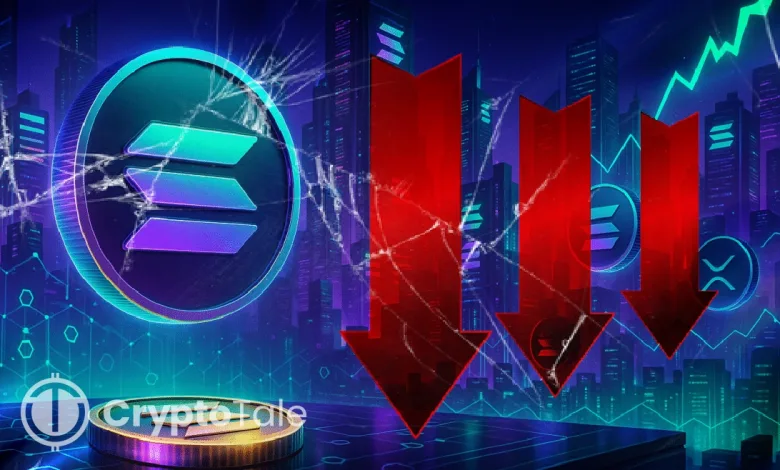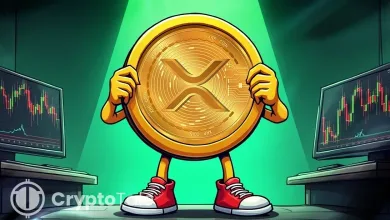Solana Company Shares Plunge 60% Amid Early PIPE Unlock

- Solana Company stock plunged 60% after accelerating its $500M PIPE unlock decision.
- The drop pushed HSDT below its PIPE pricing, exposing fragility in the DAT model.
- Market fears rise as early unlocks across DAT threaten more NAV-based sell-offs.
Solana Company, backed by Pantera Capital, is facing sharp market pressure after its shares dropped 60% in three days. The fall came after the firm decided to accelerate the unlock of its $500 million PIPE round. The move pushed Solana Company’s stock below its PIPE pricing level, revealing deeper cracks in the digital-asset-treasury (DAT) financing model.
Solana Company, trading under the ticker HSDT, announced that it would move forward with share resale registration for PIPE investors. The shares were sold in September at $6.881 each, but the stock trades near $6.50. The company confirmed the unlock earlier than scheduled, describing the decision as a way to stabilize its shareholder base.
Executive Chairman Joseph Chee said the firm is “ripping off the band-aid” by allowing early sales rather than delaying them. He noted that short-term price pressure was expected but aimed to retain long-term investors committed to the firm’s strategy.
The company’s decision came after three consecutive sessions of steep declines, totaling a 60% loss in market value. On Monday alone, HSDT fell 17%, closing below the PIPE issue level for the first time. The accelerated unlock marks a major moment for the digital-asset-treasury sector. Many firms that raised capital through PIPE rounds now face similar challenges as their lock-ups expire.
Pressure on the Digital Asset Treasury Model
The digital-asset-treasury model gained attention as companies sought to integrate corporate equity with crypto holdings. Firms like Solana Company raise capital through PIPEs to buy and manage cryptocurrencies.
Recent occurrences, however, have revealed the model’s structural weakness. When PIPE unlocks occur, large volumes of shares enter circulation, creating intense selling pressure. According to market analysts, this dynamic frequently pushes stock prices closer, or below issuance levels, reducing investor confidence.
HSDT’s decline follows a broader trend across DAT issuers that relied heavily on PIPE financing to fund crypto acquisitions. The model depends on maintaining issuance premiums and bullish crypto sentiment. When that sentiment fades, net asset value (NAV) discounts emerge, leading to cascading sell-offs.
Joseph Chee acknowledged that volatility was likely to continue. However, he suggested that the company’s fundamentals remained tied to Solana’s long-term growth. As a treasury vehicle, HSDT positions itself to optimize Solana (SOL) accumulation per share. It also targets institutional-grade staking yields above 7%, positioning itself as a bridge between capital markets and on-chain finance.
Related: BNB and Solana Tops Santiment’s List of Most Discussed Crypto Tokens
Market Context and Institutional Response
The sell-off also suggests possible contagion risks for other treasury-backed digital asset companies. Many of these companies have impending unlock schedules that might cause similar market reactions. Analysts caution that further NAV discounts across peer firms could occur unless fresh capital inflows appear.
The broader environment remains unstable. Bitcoin’s recent correction below $110,000 and reduced liquidity across crypto markets have compounded funding challenges. Institutional investors are becoming more selective about exposure to publicly traded crypto treasuries, particularly those reliant on PIPE financing.
Meanwhile, HSDT’s early unlock is seen as an attempt to get ahead of the curve rather than delay an inevitable correction. The company said it wants to create a “market equilibrium” and “filter weak hands” before rebuilding price stability.
Solana Company’s earlier rally to $25 after the PIPE round now appears to have been driven by speculative enthusiasm. The subsequent 60% collapse aligns with cooling excitement across the digital treasury sector. As prices fall below NAV, some investors argue that holdings effectively represent discounted exposure to Solana tokens, though liquidity risks remain significant.





